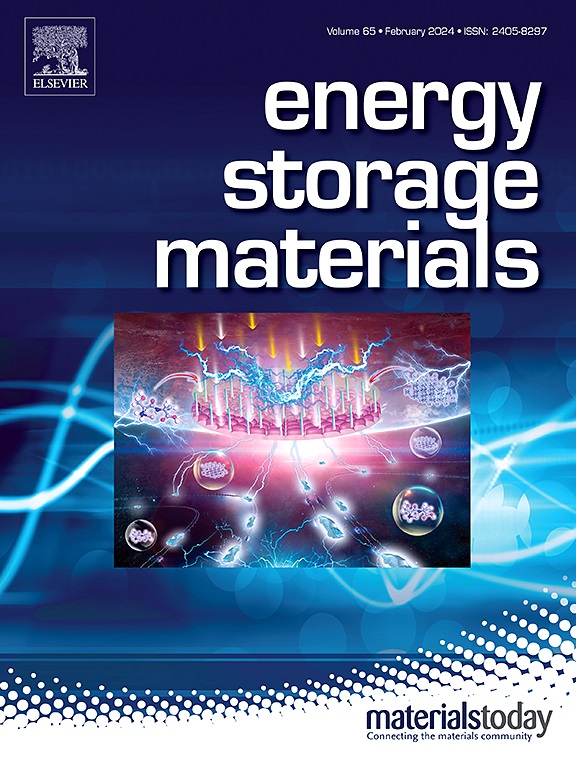硫化物固体电解质管实现的室温圆柱形锂电池
IF 18.9
1区 材料科学
Q1 CHEMISTRY, PHYSICAL
引用次数: 0
摘要
圆柱形电池具有安全裕度高、资金/维护成本低等优点,是一种很有前途的电网储能设备。然而,圆柱形电池的实际应用受到其高工作温度(超过240°C)的阻碍。在此,我们报告了一种硫化物基圆柱形电池,其工作温度显著降低至30°C,由硫化物固体电解质管,液体锂阳极和原位聚合凝胶层实现。该电池在20-55°C的温度范围内表现出稳定的性能,在30°C下循环50次后保持98%的容量,实现80%的能效。此外,在-70°C冷冻6小时后,电池恢复稳定的电化学性能。该对称电池在1ma cm-²下也表现出500小时的稳定循环,临界电流密度增加33.01%,达到4.07 mA cm-²,这归功于优化的陶瓷烧结减少了晶界。这项工作通过结合室温超离子导电性硫化物电解质管解决了圆柱形电池的百年挑战,显着降低了工作温度,成本和相关风险。本文章由计算机程序翻译,如有差异,请以英文原文为准。
Room-temperature cylindrical lithium battery enabled by sulfide solid electrolyte tube
Cylindrical batteries have been explored as promising grid energy storage device, due to their high safety margin and low capital/maintenance costs. However, the practical application of cylindrical batteries is hindered by their high operational temperatures (above 240 °C). Herein, we report a sulfide-based cylindrical battery with a significantly reduced operating temperature of 30 °C, enabled by a sulfide solid electrolyte tube, a liquid lithium anode, and an in-situ polymerized gel layer. The battery demonstrates stable performance over a temperature range of 20–55 °C, maintaining 98 % of its capacity after 50 cycles at 30 °C and achieving 80 % energy efficiency. Additionally, the battery recovers stable electrochemical performance after freezing at -70 °C for 6 h. The symmetric battery also exhibits stable cycling for 500 h at 1 mA cm-², with a 33.01 % increase in critical current density to 4.07 mA cm-², attributed to optimized ceramic sintering that reduces grain boundaries. This work addresses a century-old challenge in cylindrical batteries by incorporating room-temperature superionic-conductivity sulfide electrolyte tubes, significantly lowering operating temperature, costs, and associated risks.
求助全文
通过发布文献求助,成功后即可免费获取论文全文。
去求助
来源期刊

Energy Storage Materials
Materials Science-General Materials Science
CiteScore
33.00
自引率
5.90%
发文量
652
审稿时长
27 days
期刊介绍:
Energy Storage Materials is a global interdisciplinary journal dedicated to sharing scientific and technological advancements in materials and devices for advanced energy storage and related energy conversion, such as in metal-O2 batteries. The journal features comprehensive research articles, including full papers and short communications, as well as authoritative feature articles and reviews by leading experts in the field.
Energy Storage Materials covers a wide range of topics, including the synthesis, fabrication, structure, properties, performance, and technological applications of energy storage materials. Additionally, the journal explores strategies, policies, and developments in the field of energy storage materials and devices for sustainable energy.
Published papers are selected based on their scientific and technological significance, their ability to provide valuable new knowledge, and their relevance to the international research community.
 求助内容:
求助内容: 应助结果提醒方式:
应助结果提醒方式:


